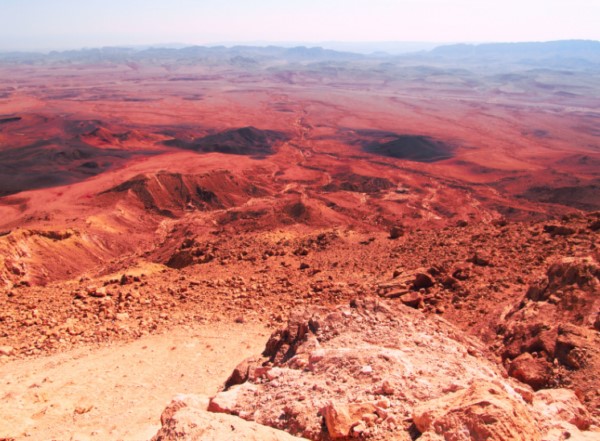In 2016 , the Curiosity rover stumbled into the Gale Crater on Mars on a very unusual find. On the slope of Mount Sharp, where the rover was working, a large amount of a rare mineral was discovered. Tridymite, a type of quartz, is indeed found very sparsely on Earth and is formed at high temperatures, which can be found in magma.

Фото Від KuzovlevA
Although on There is extensive evidence of past basalt volcanism activity on Mars in some regions, the once supposedly water-filled Gale crater is not one of them. Therefore, scientists have been thinking about how tridymite ended up in such an uncharacteristic place.
A team led by planetary scientist Valerie Paire from the University of Arizona solved the mystery: the mineral could have appeared as a result of one explosive volcanic eruption that occurred approximately 3.0 to 3.7 billion years ago.
“The discovery of tridymite in mudstone in Gale Crater is one of the most amazing observations made by the Curiosity rover in 10 years of studying Mars,” said Martian geologist Kirsten Siebach from Rice University. According to her, tridymite is usually associated with quartz-forming, explosive, evolved volcanic systems on Earth, but at the bottom of the ancient lake of Mars, most of whose volcanoes are very primitive, this mineral does not seem to belong at first glance.
Since scientists cannot visit the Red Planet live, they have two tools to solve the mystery: the deposits of tridymite found here on Earth, and mineral samples collected by Curiosity from Gale Crater and Mount Sharp — the peaks in the center of the crater.
I had to start from the Ground. Each documented tridimite deposit and the conditions in which it was formed were thoroughly studied by the research team. The team then sifted through data collected by Curiosity about the composition of the long-dried sedimentary lake bed in Gale Crater.
Tridymite forms at temperatures above 870 degrees Celsius (1600 degrees Fahrenheit) and turns into a phase called cristobalite at temperatures around 1470 degrees Celsius. Both of these forms are found in a single layer on the slope of Mount Sharp. In addition, Curiosity has discovered feldspar and opal silica, which on Earth can also be found in volcanic rocks.
By putting these pieces together, we get an exciting scenario involving a magmatic hearth under the Gale crater that existed billions of years ago. The team assumed that this camera had been under the lake for quite a long time. During this time, cooling led to a process called fractional crystallization, removing and separating minerals to form excess silica.
When the chamber eventually split, it was as a result of a huge explosion that spewed ash containing silica — now in the form of tridymite — into the air to rain back into the lake in Gale Crater and its tributaries. According to the team, these waters had to erode and wash out the ash to get the chemical composition of the layer observed by Curiosity.
Since this silicon eruption is an evolved type that would be different from basalt volcanism, evidence of which is abundant on On Mars, the team’s analysis suggests that the red planet may have had a much more complex volcanic history than we know. Future missions should look for evidence of other instances of this advanced volcanism to help limit when and in what context it occurred on Mars.
